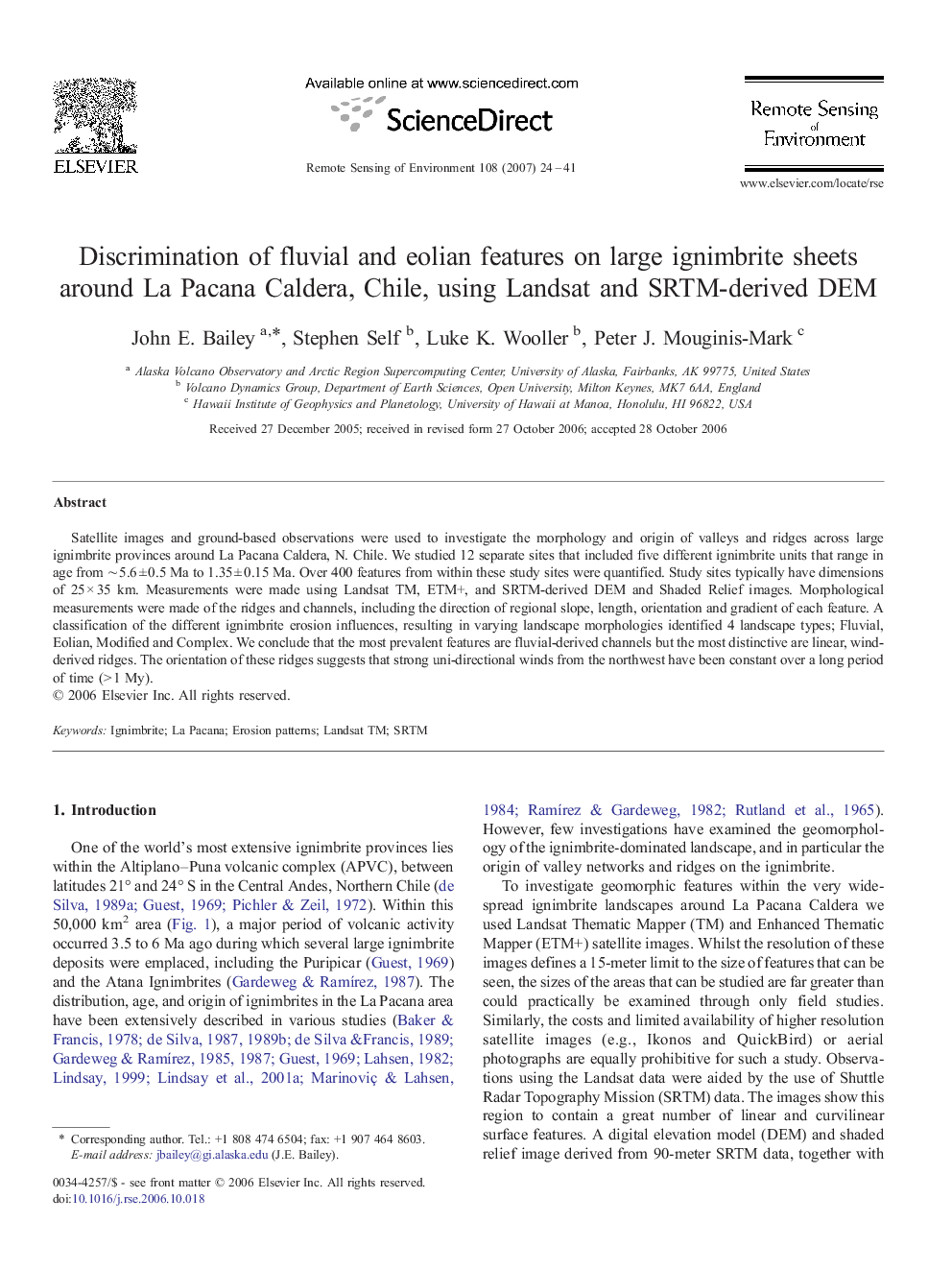| Article ID | Journal | Published Year | Pages | File Type |
|---|---|---|---|---|
| 4460889 | Remote Sensing of Environment | 2007 | 18 Pages |
Abstract
Satellite images and ground-based observations were used to investigate the morphology and origin of valleys and ridges across large ignimbrite provinces around La Pacana Caldera, N. Chile. We studied 12 separate sites that included five different ignimbrite units that range in age from â¼Â 5.6 ± 0.5 Ma to 1.35 ± 0.15 Ma. Over 400 features from within these study sites were quantified. Study sites typically have dimensions of 25 Ã 35 km. Measurements were made using Landsat TM, ETM+, and SRTM-derived DEM and Shaded Relief images. Morphological measurements were made of the ridges and channels, including the direction of regional slope, length, orientation and gradient of each feature. A classification of the different ignimbrite erosion influences, resulting in varying landscape morphologies identified 4 landscape types; Fluvial, Eolian, Modified and Complex. We conclude that the most prevalent features are fluvial-derived channels but the most distinctive are linear, wind-derived ridges. The orientation of these ridges suggests that strong uni-directional winds from the northwest have been constant over a long period of time (> 1 My).
Related Topics
Physical Sciences and Engineering
Earth and Planetary Sciences
Computers in Earth Sciences
Authors
John E. Bailey, Stephen Self, Luke K. Wooller, Peter J. Mouginis-Mark,
